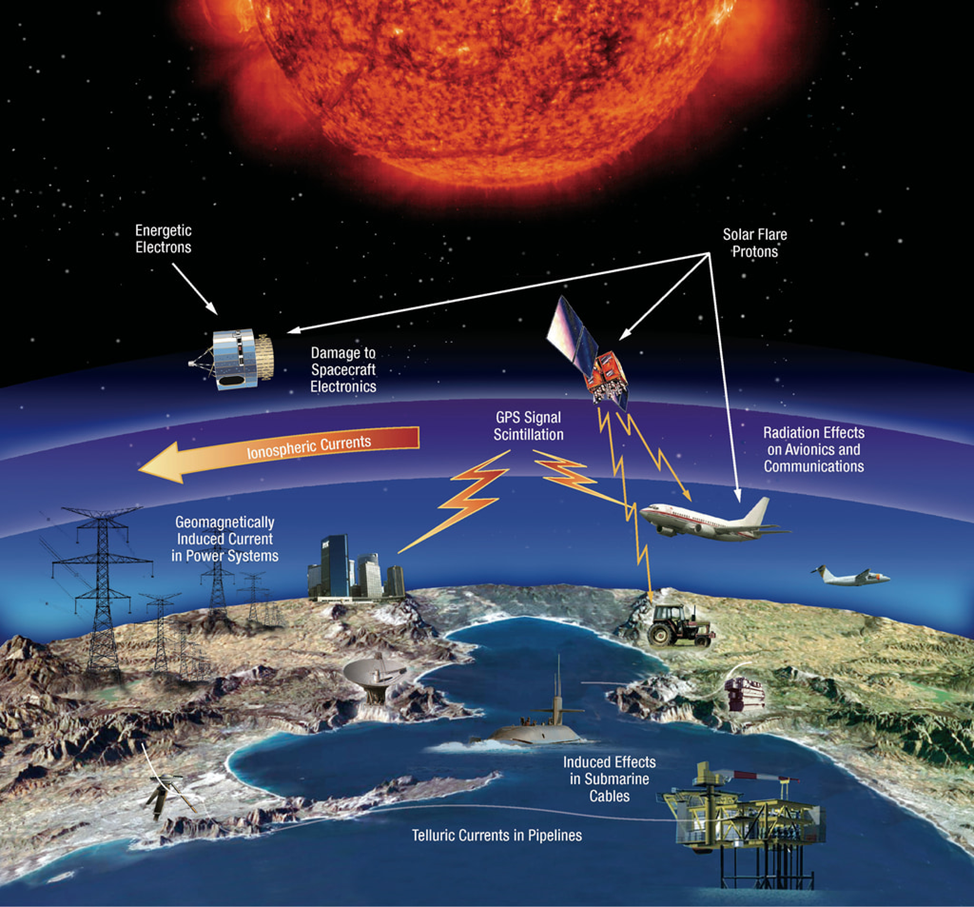Double the Market with This Space Weather Leader
 |
| By Michael A. Robinson |
The old saw that “Everybody complains about the weather, but nobody does anything about it” is about to get turned on its head.
Here’s the thing. While that may be true here on Earth, it turns out we're finally doing something about it in outer space — at least as it relates to communications and other infrastructure.
And it's creating a significant investment opportunity that most market watchers are completely ignoring.
See, NASA awarded a $230 million contract to deliver spacecraft for a crucial space weather project.
This program represents a critical inflection point in how we protect our increasingly interconnected world.
And I've uncovered a storied New Space Race leader and major global military contractor set to profit from it all.
The firm recently scored two other atmosphere-related awards, bringing the U.S. total to more than $1 billion.
With that in mind, let me show why over the past five years this low-profile firm doubled the market’s returns …
The Invisible Threat
Forget cell towers. The real action is overhead.
As the digital world surges past the limits of fiber optics and 5G, space-based communications are stepping in — fast.
Satellite networks are delivering high-speed, low-latency internet to planes, ships, war zones and remote villages. That’s full global coverage — no cell towers needed.
Unfortunately, there’s a threat that could disrupt it all — adverse space weather.
Solar storms can fry satellites and blackout networks. As bandwidth demand explodes, the smart money is heading for orbit — and for the companies building the defenses to keep it all running.
Recent studies have shown our digital world is increasingly vulnerable to severe solar storms. Insurance Business America says a severe solar storm could cause more than $3 trillion in damage.
That’s why the NASA and NOAA Lagrange 1 (L1) space weather project was developed. The new satellite will travel and position itself at 900,000 miles from Earth.
It will remain there as an early warning system of solar disturbances that can affect electronics in space and on Earth.
Commercial satellite constellations like Starlink and OneWeb are projected to have tens of thousands of interconnected satellites that circle the Earth.
But solar storms emitting massive radiation bursts and electromagnetic tsunamis could cripple or destroy these networks.

Knowing ahead of time that an extreme solar event was heading toward Earth’s atmosphere would allow vulnerable operations to shut down, redirect or shield their equipment before it hit.
That may cause some short-term disruption, but not a catastrophe.
A Key Space Leader
That’s where BAE Systems (BAESY) comes in. The storied British firm recently nailed the $230 space million contract I noted a moment ago.

BAE will develop a spacecraft for NOAA's Space Weather Next program, specifically focusing on the Lagrange 1 Series missions.
These spacecrafts will be positioned at the Sun-Earth Lagrange Point 1, roughly one million miles from Earth.
The idea is to provide continuous monitoring of solar activity. By observing phenomena such as coronal mass ejections, solar flares and solar wind, the L1 series aims to deliver real-time data to NOAA’s Space Weather Prediction Center.
This information is crucial for forecasting geomagnetic storms and mitigating their potential impact on Earth's communication networks, power grids and satellite operations.
BAE Systems began as a British defense powerhouse, formed in the late 1990s through the merger of British Aerospace and Marconi Electronic Systems.
Now operating in nearly 40 countries, BAE has steadily expanded its U.S. footprint — and with that, its role in cutting-edge defense and space resilience.
That tech-forward strategy is paying off as the space economy races toward a $1 trillion valuation, on track to double by 2035, according to McKinsey.
Space Services to Grow
And most of BAE’s long-term contracts are also open-ended. That means the amount of work from these initial contracts will open the door for even more work.
For example, there are five Lagrange points that have been identified, each offset from the other and each closer to the sun.

If all goes well on the BAE satellite at L1, you can be sure that BAE will be looked on very favorably for future efforts.
BAE’s U.S. space division is based in Colorado. And it delivers an array of space, data and communications expertise to U.S. military and intelligence sectors.
For example, in January, BAE won a $345 million contract from the National Geospatial Intelligence Agency to enable faster data dissemination to defense and intelligence communities.
Not only that, but it also scored an $85 million contract with the U.S. Navy for real-time and simultaneous network operations.
A Strong Defense Hook
Actually, you can think of this as a great “twofer.”
As important as it is, BAE’s space work is only half the story. With the Trump administration pushing Europe to spend more on its own defense, the firm is perfectly positioned.
BAE builds everything from next-gen naval vessels to combat aircraft to missile systems. With deep ties across NATO and Europe, BAE is also poised to profit from a continental arms race sparked by shifting U.S. foreign policy.
No wonder its backlog of orders was up 11% in 2024, to $98 billion. That means it has sales baked in for years to come.
Irony abounds. The stock has largely been flying under Wall Street’s radar — with great results.
It’s been crushing the market so far this year. But this is no flash in the pan.
Over the past five years, the S&P 500 is up a respectable 115%.
By contrast, BAE has gained 240%.
That means the stock beat the benchmark by, drumroll please … 108%.
Now you know why I say, this is a great way to profit from the New Space Race and the Trump defense imperative in a single great stock you can count on for many years.
Best,
Michael A. Robinson
P.S. With yesterday’s wild market action, there’s no better time than now to learn about a special strategy that is built to do even better during highly volatile markets.
The only problem is that spots are limited. I urge you to watch this interview to grab yours today.

